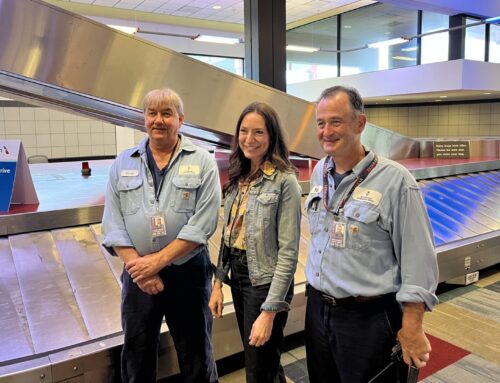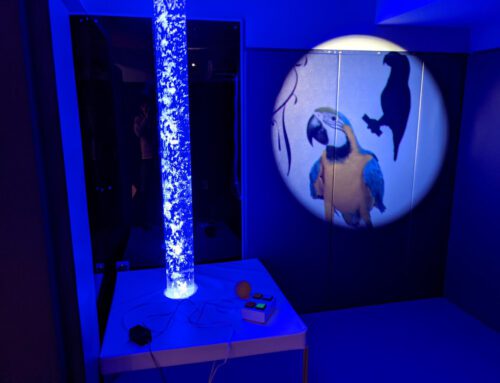Helping Neurodiverse Travelers Feel More Included
Wiki-style website lists airport resources nationwide, including PIT’s, to make travel easier
By Gina Mastrangelo
Published August 28, 2023
Read Time: 3 mins

Early this year, Jonathan Sutter had an idea: a website focused on resources for airport passengers with autism. Today, it’s up and running.
Sutter, who has over 20 years of experience in the aviation industry and currently works as the Senior Director of J.D Power, Travel Industry Practice, launched TravelingWiki.com two months ago. It’s a free educational tool that helps passengers with autism, sensory sensitivity and other neurodiverse conditions prepare for their flights.
The wiki offers general tips and resources for passengers to review before they fly. It also showcases 14 airports and the spaces that passengers with autism may find helpful before their flights—including PIT’s award-winning Presley’s Place.
In April, Sutter spoke with Pittsburgh International Airport CEO Christina Cassotis at an event he helped organize at Duke University. Cassotis told him all about Presley’s Place and explained that PIT could supply the plans to other airports to support them in developing sensory rooms of their own.
Sutter visited Presley’s Place not long after. In the past, he had stopped by sensory rooms at other airports, including the one at Akron-Canton Airport. Sutter soon realized that, while plenty of websites provide information on airports, few focus on providing resources for passengers with autism.
He created his website in an effort to help solve that problem.
“I’ve learned from a number of autism experts recently about the importance of providing this kind of information in this kind of format,” Sutter said. “Building this resource is a way of documenting and memorializing the ways different stakeholders in different communities have found to help travelers.”

Akron-Canton Airport became one of the latest airports to add a sensory room for travelers as part of its $37 million terminal expansion project completed in November 2020. (Photo by Jonathan Sutter/TravelingWiki.com)
Presley’s Place came to fruition thanks to PIT employee Jason Rudge. In 2017, he reached out to Cassotis with a request to create a sensory room at PIT for passengers with autism. As the parent of a son with autism, Rudge knows the challenges that passengers with autism face when flying.
Rudge said he is happy to see other airports adding sensory rooms of their own, and these changes show people’s eyes are opening to what passengers with autism need.
“Some people aren’t always comfortable with change or strange places,” Rudge said. “If they can get into that room and relax or decompress, they’ll know everything will be okay.”
But a sensory room like Presley’s Place isn’t the only airport spot for passengers to unwind. Sutter noticed that, while not every airport has a sensory room, many have quiet spaces for neurodiverse passengers to escape the often-stressful activity inherent to busy airports.
His site lists other low-stimulation areas that passengers with neurodiverse sensitivities can use, including hotel airport conference rooms, lounges and family rooms. Although these rooms aren’t designated as autism-friendly, they help meet the need for a quiet space.
Building the site was no easy feat. Sutter had never created a website, so he reached out to experts to help him bring the site to life.
Although not directly related to his position at J.D. Power, Sutter considers this project an extension of his career in aviation. He wants passengers to see their options before they enter the airport and hopes knowledge will make them more confident about traveling. Showing passengers the sensory-friendly spaces airports offer can help put flight anxiety at ease.
“Hopefully it will empower some travelers to be able to take journeys that wouldn’t have otherwise been possible,” Sutter said.






